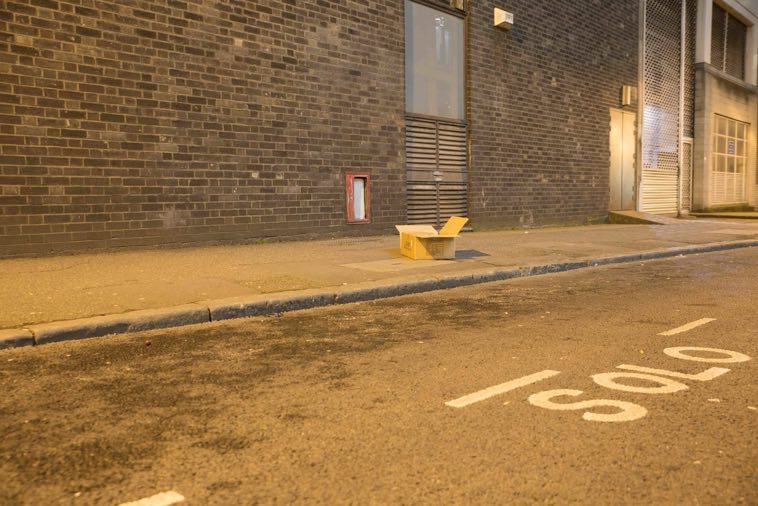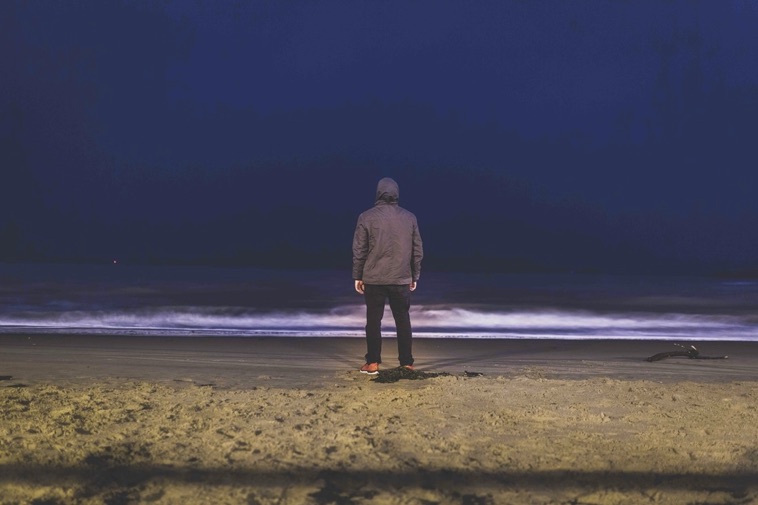“I like to take the reality of the world and use it as a springboard for the imagination.”
Alec Soth, 2015
This week’s work explored the idea of ‘constructed realities’ and the practice of making rather than taking photographs. The question was asked whether we considered ourselves as ‘hunters’ or ‘farmers’, the idea being that the farmer cultivates and nurtures images into being while the hunter stalks the perfect shot, waiting for the moment to strike a la Cartier-Bresson.
In my own practice, particularly prior to commencing this MA, I was certainly a ‘hunter’ in that my practice largely consisted of roaming the streets at night, just hoping to find something of interest to shoot. As my awareness of wider photographic conventions has grown however, I have been challenged to be more thoughtful in my selection of scenes and the approach to composition while shooting. One thing that hasn’t changed, is my openness to altering the information originally captured by my camera, in order to get closer to a visual position that I perceived in my mind or adhere more closely to a desired reading of the image. So a ‘hunter-farmer’ of sorts!
As I’ve stated before, my general position is that all photographs are constructed to some extent. The idea that photographers simply walk around catching images that fall from the sky into their hands is something of a falsehood to my mind.
An image that for me illustrates this idea perfectly is from the work of Vibeke Tandber whose Line series consists of portraits of one of the artist’s friends.
Line 1 by Vibeke Tandberg
On the face of it these images appear to be straightforward yet intimate portraits of a young woman in a domestic setting. Actually though, they are digital composites of elements of the artist’s features and those of her subject, illustrating as Cotton (2014) states
“how a photographic portrait, no matter how guileless it may seem, is partly the photographer’s projection of herself onto her subject.”
Firstly, the ‘artifice’ in these images would probably not have been apparent to the viewer, had it not been explicitly declared by the author. This, again, challenges the idea that photography is ever anything other than a construction of sorts. I am happy to concede that there is a spectrum of construction on which all practitioners may find themselves but I would argue that everyone can be placed on that spectrum somewhere.
Another issue that these images raise, is the idea that constructed images are more powerful or more easily able to communicate, if their referents are well-known. In this case, we may not be familiar with the appearance of either Tandberg or her subject, and thus the constructed nature of the image is more difficult to discern and possibly carries less significance for having been altered in this way.
In the case of much of Richard Prince’s work, his references are easily identifiable. This allows an easier dialogue between the author and the viewer about what the potential wider significance of the image might be or what it may be commenting on.
Untitled (Cowboy) by Richard Prince
As in any conversation, if you’re able to start from a point of common knowledge it’s much easier to go from there, safe in the shared vocabulary and mutual reference points you hold in common, rather than awkwardly trying to establish what, if anything, you both might understand, from which to build an exchange of views.
So the point then possibly is, that while construction of an image is, I believe, fundamental to all photographic practice, it would be wise for the image-maker to consider what context the image will be viewed in, or what reference points you may share with your intended viewers, because these elements are likely to influence the extent to which a heavily constructed image (i.e. One that widely diverges from the original scene, or from a depiction of a reality that will be familiar to the viewer) can be received in the way its author intended.
For all of us who hope to reach others with our work, we must consider how the way we create images can hinder or help our connection with the viewer.
References:
BUBICH, Olga. 2015. ‘Alec Soth: “Photography is a unique pursuit with its own mix of variables” ‘. Bleek Magazine [online]. Available at: http://bleek-magazine.com/interviews/alec-soth/ [accessed 12 February 2018].
HENRY, Karen. 2006. ‘The Artful Disposition: Theatricality Cinema and Social Context in Contemporary Photography’. In Lori PAULI (ed.). Acting the part: photography as theatre. London: Merrell, 133-161.
BANG LARSEN, Lars. 2000. ‘Vibeke Tandberg’. Frieze.com [online]. Available at: https://frieze.com/article/vibeke-tandberg [accessed 18 February 2018].
COTTON, Charlotte. 2014. The Photograph As Contemporary Art. London: Thames & Hudson.







